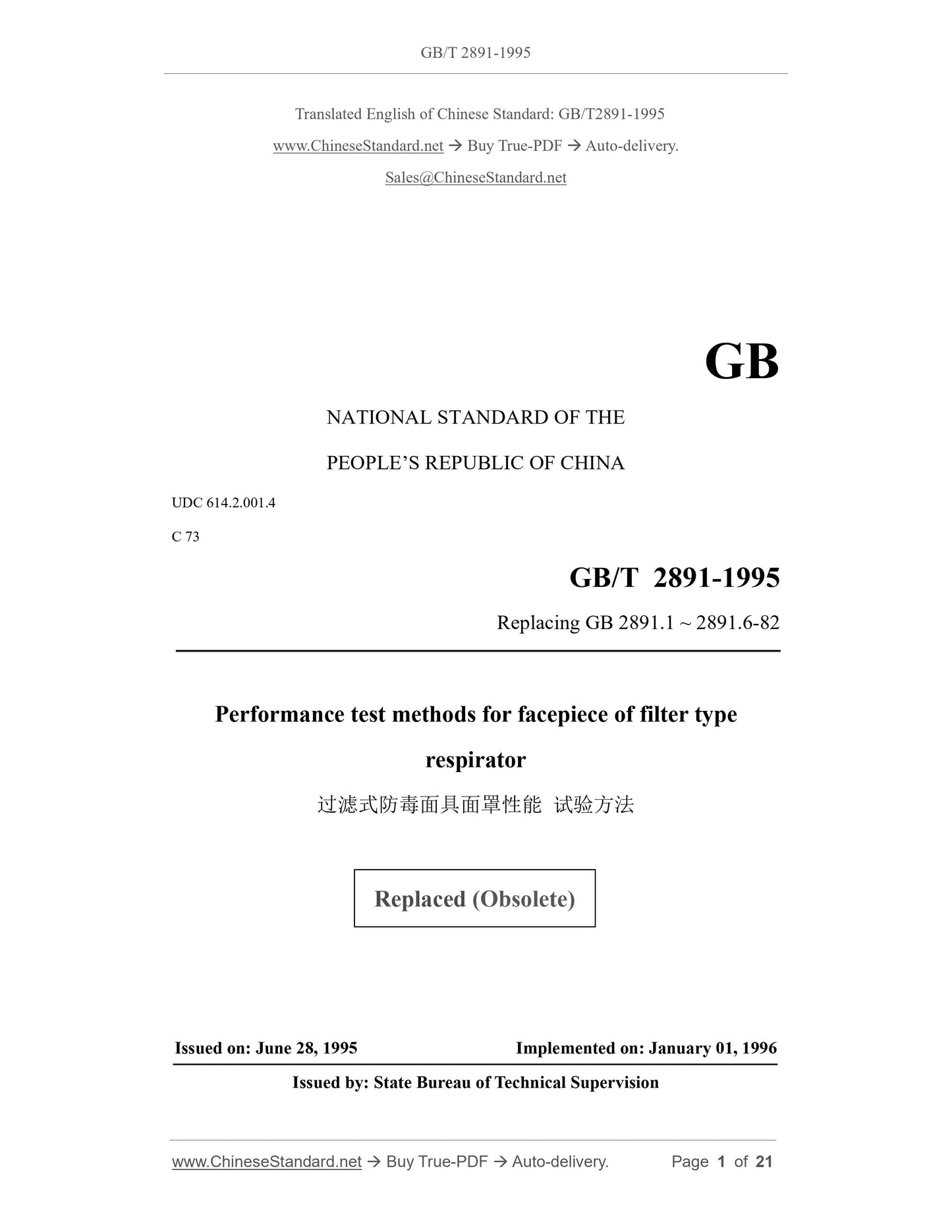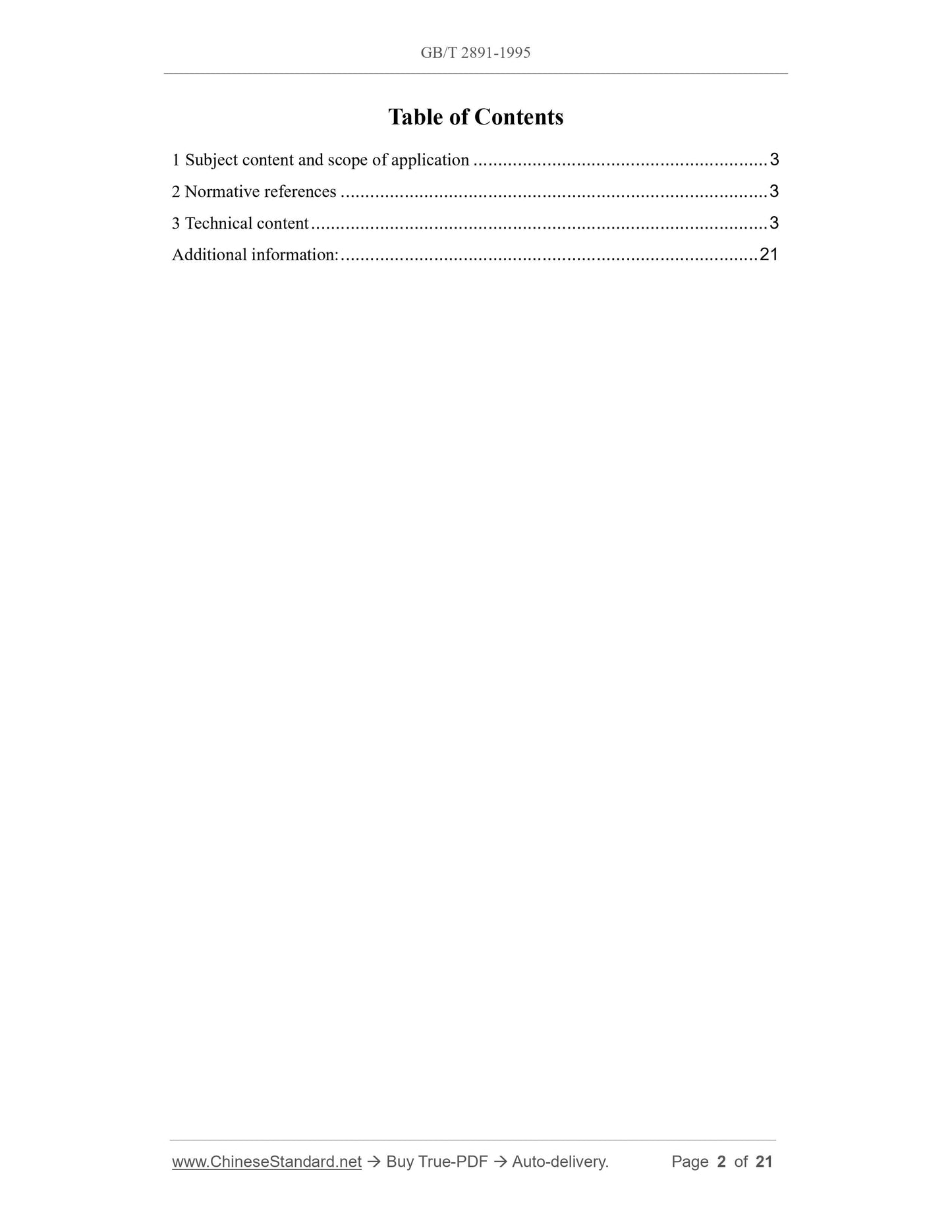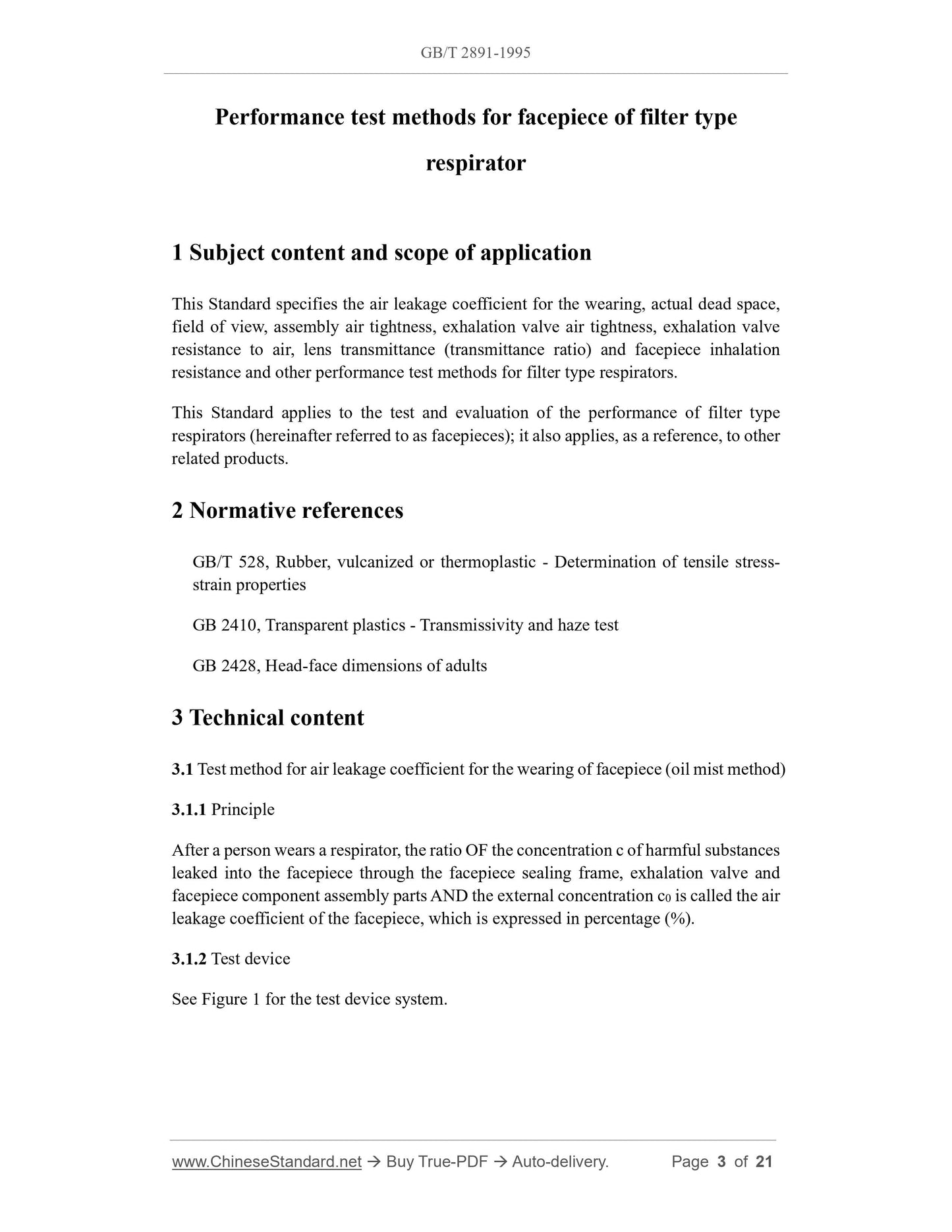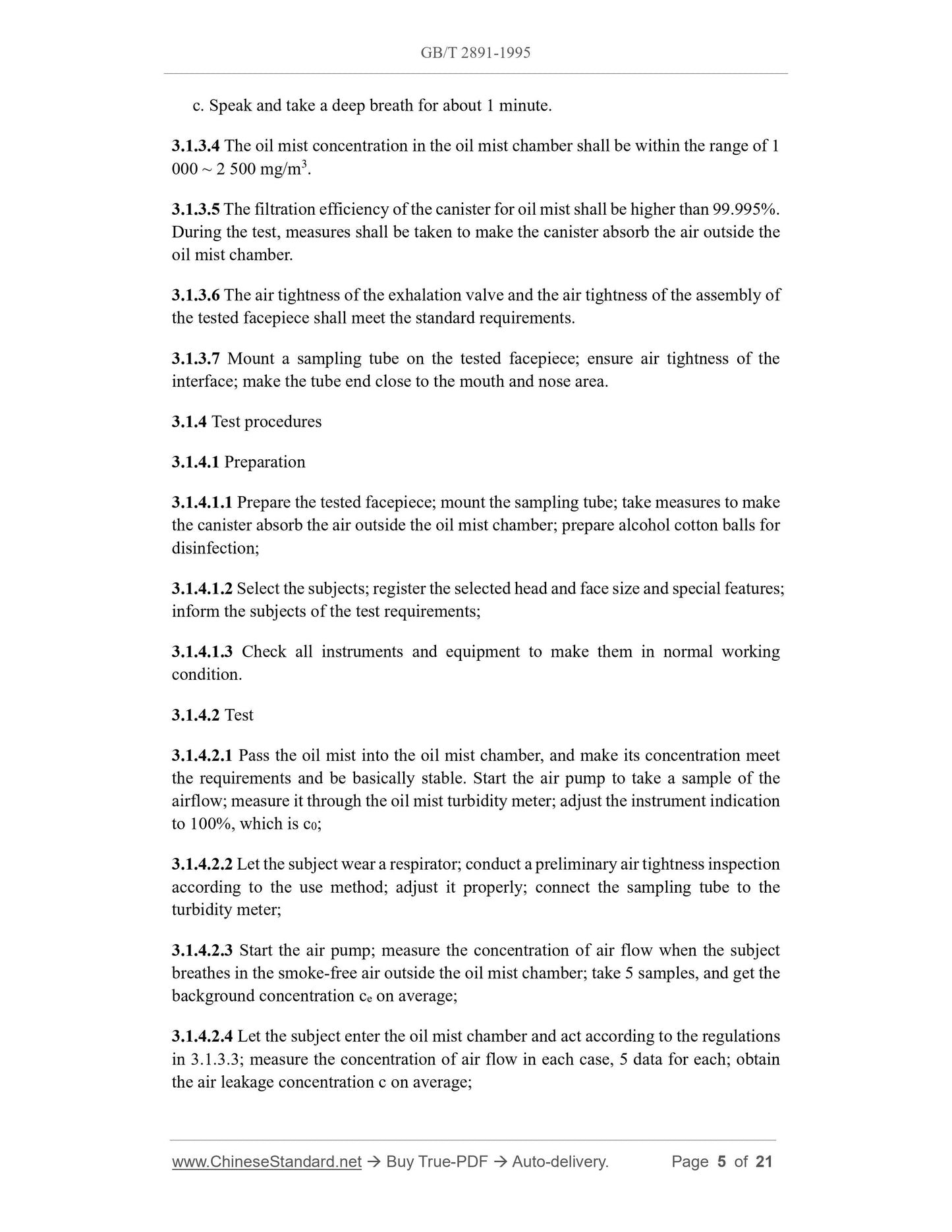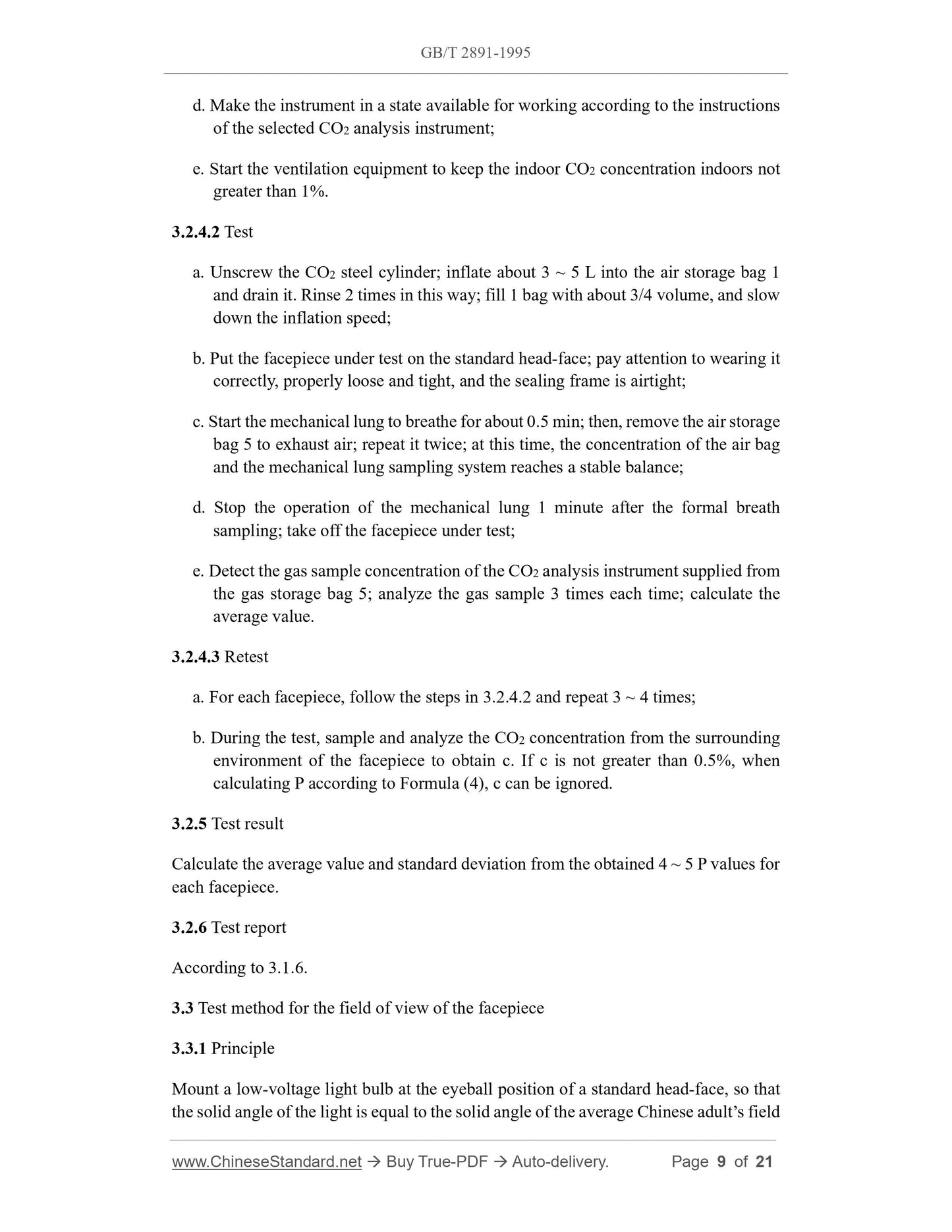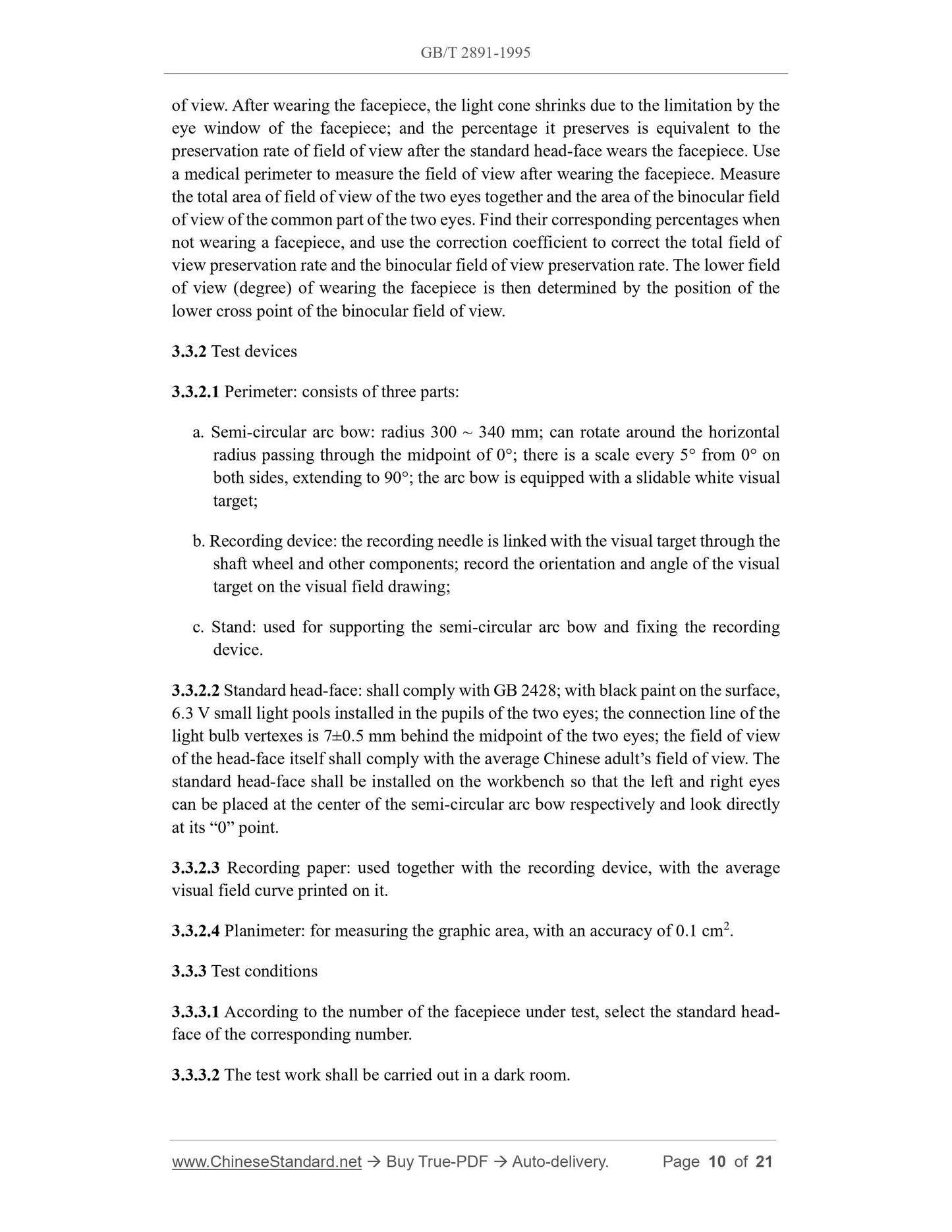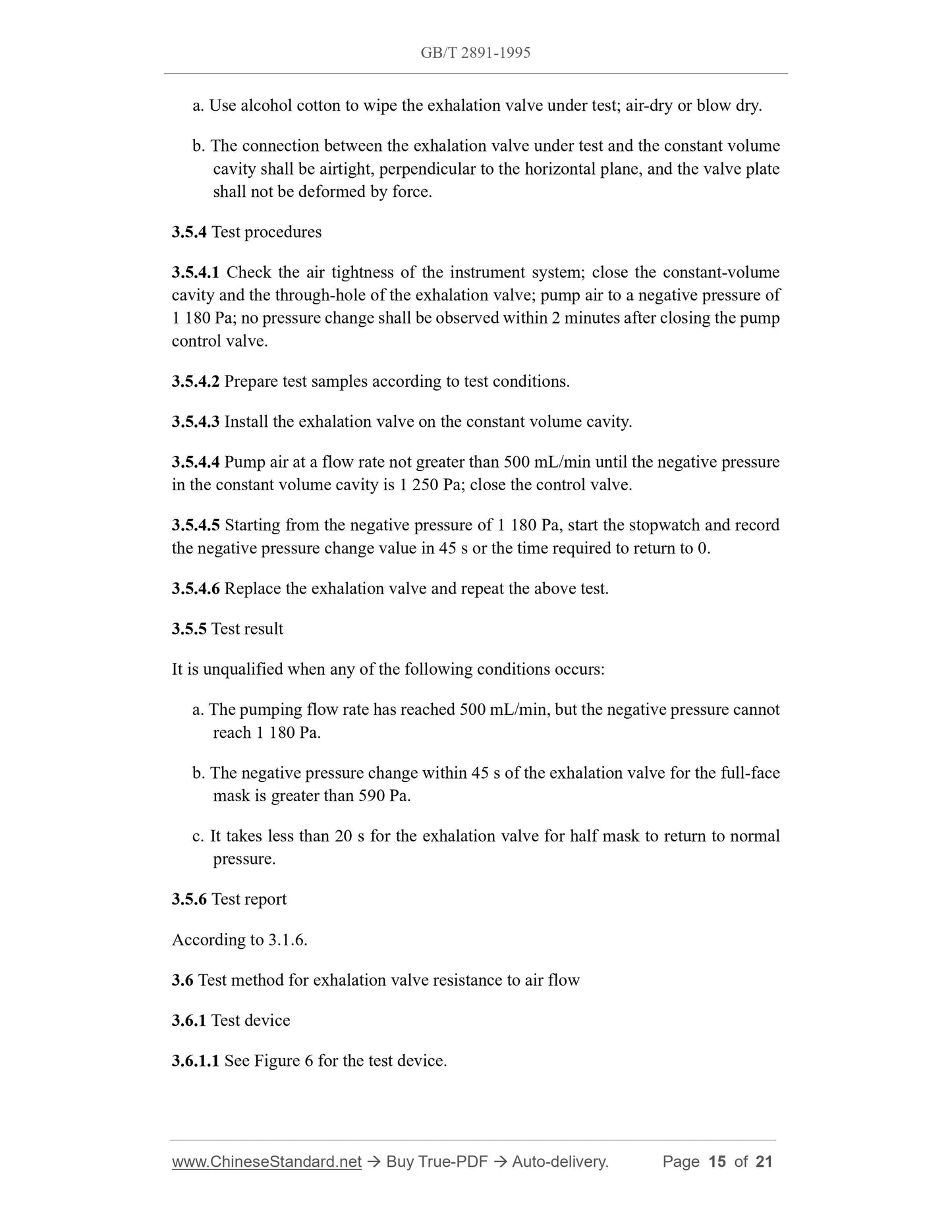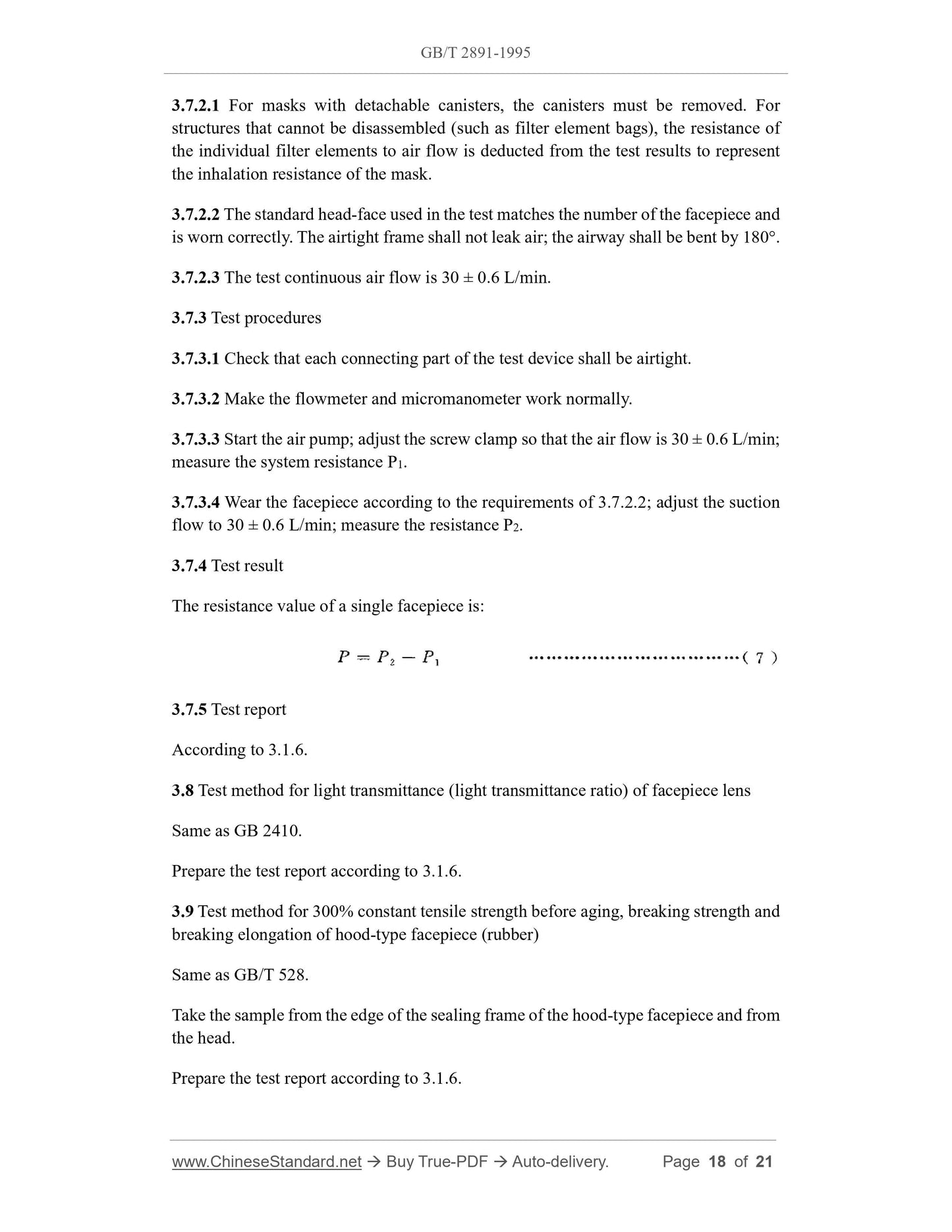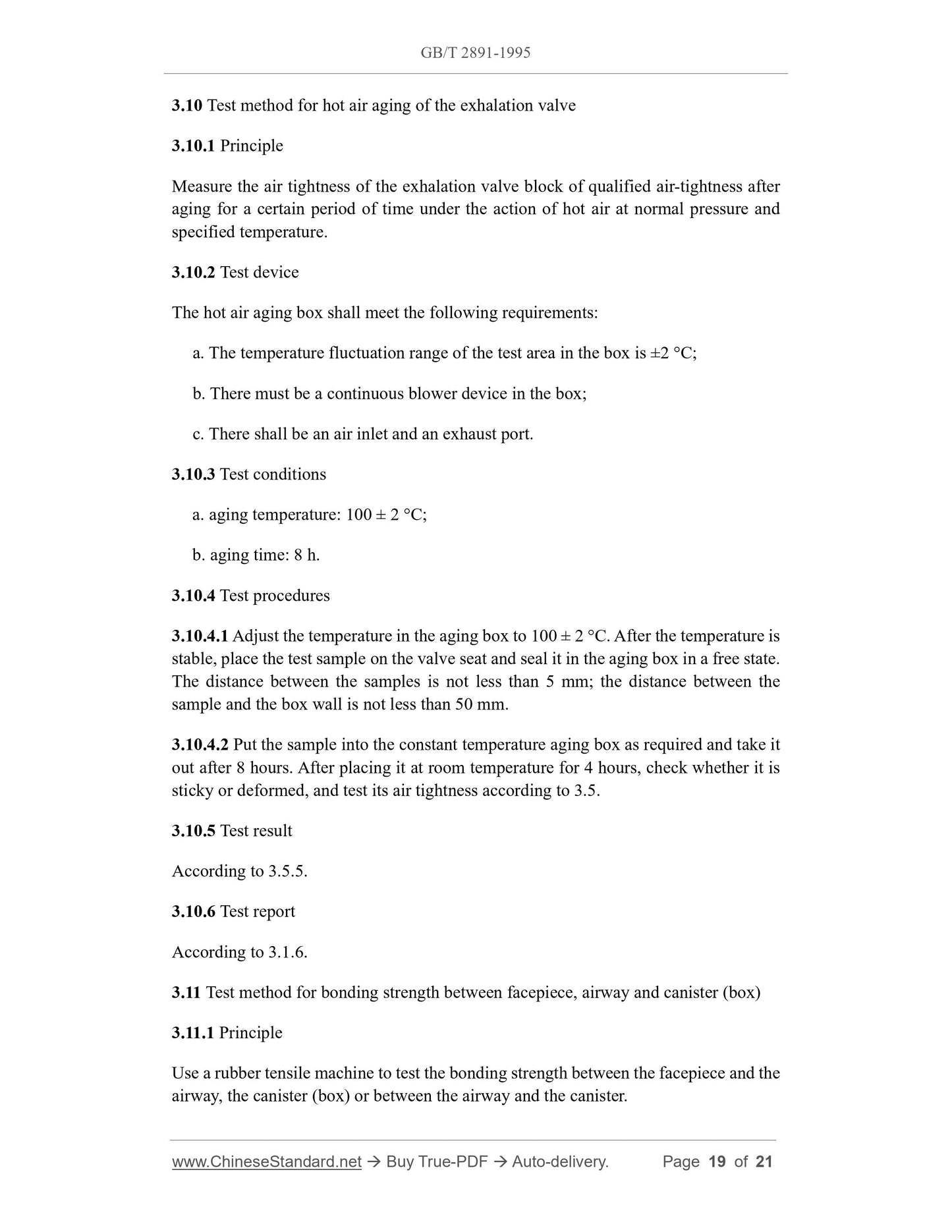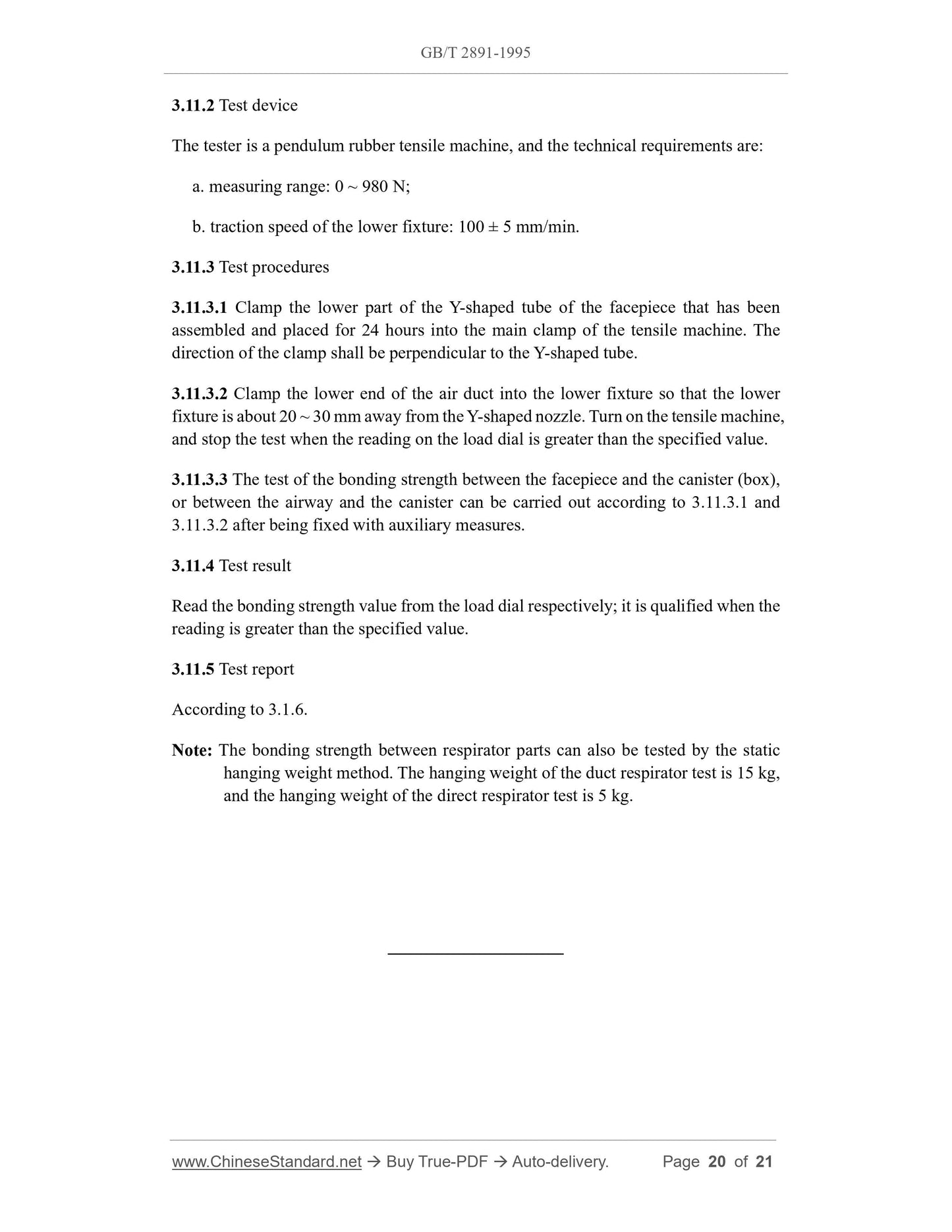1
/
of
10
www.ChineseStandard.us -- Field Test Asia Pte. Ltd.
GB/T 2891-1995 English PDF (GB/T2891-1995)
GB/T 2891-1995 English PDF (GB/T2891-1995)
Regular price
$555.00
Regular price
Sale price
$555.00
Unit price
/
per
Shipping calculated at checkout.
Couldn't load pickup availability
GB/T 2891-1995: Performance test methods for facepiece of filfer type respirator
Delivery: 9 seconds. Download (and Email) true-PDF + Invoice.Get Quotation: Click GB/T 2891-1995 (Self-service in 1-minute)
Newer / historical versions: GB/T 2891-1995
Preview True-PDF
Scope
This Standard specifies the air leakage coefficient for the wearing, actual dead space,field of view, assembly air tightness, exhalation valve air tightness, exhalation valve
resistance to air, lens transmittance (transmittance ratio) and facepiece inhalation
resistance and other performance test methods for filter type respirators.
This Standard applies to the test and evaluation of the performance of filter type
respirators (hereinafter referred to as facepieces); it also applies, as a reference, to other
related products.
Basic Data
| Standard ID | GB/T 2891-1995 (GB/T2891-1995) |
| Description (Translated English) | Performance test methods for facepiece of filfer type respirator |
| Sector / Industry | National Standard (Recommended) |
| Classification of Chinese Standard | C73 |
| Classification of International Standard | 13.340.30 |
| Word Count Estimation | 14,126 |
| Date of Issue | 6/28/1995 |
| Date of Implementation | 1/1/1996 |
| Older Standard (superseded by this standard) | GB 2891.1-1982; GB 2891.2-1982; GB 2891.3-1982; GB 2891.4-1982; GB 2891.5-1982; GB 2891.6-1982 |
| Quoted Standard | GB/T 2410; GB 2426; GB/T 528 |
| Regulation (derived from) | Announcement of Newly Approved National Standards 2009 No. 4 (No. 144 overall) |
| Issuing agency(ies) | State Bureau of Technical Supervision |
Share
